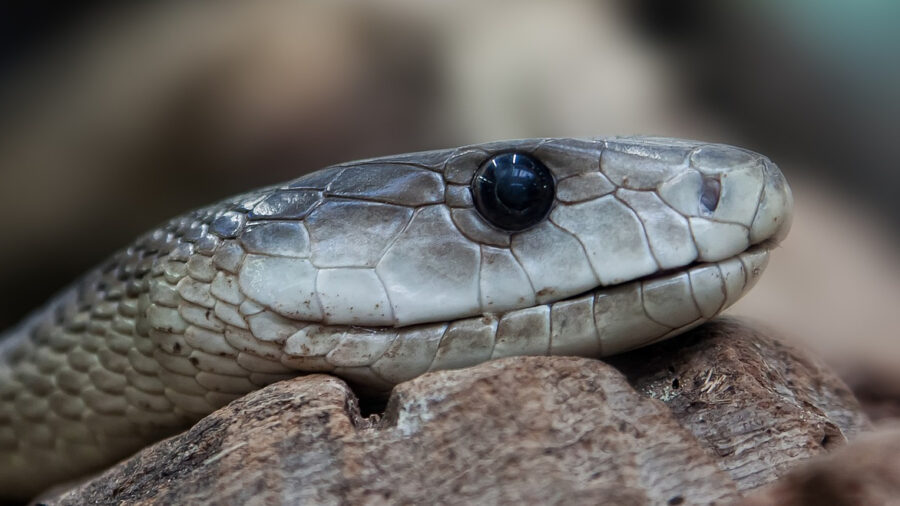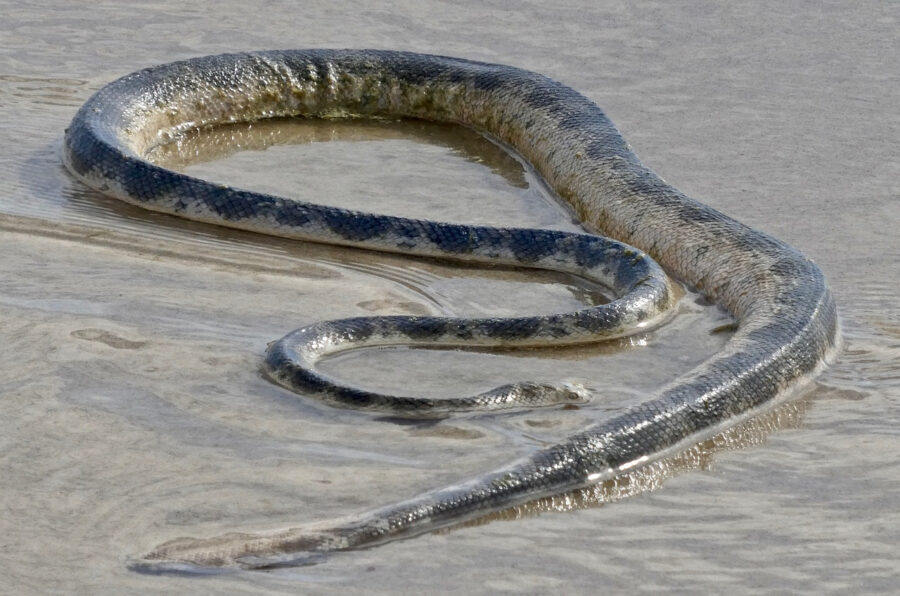Huge Snake Emerges From The Ocean, See The Photos
See an incredible sight as a sea snake leaps out of the water.
This article is more than 2 years old

Most times when one considers what lurks beneath the depths of our wondrous oceans, snakes are not the first thought. But wildlife photographer Rachelle Mackintosh not only has proof positive of an ocean snake, the picture she captured is considered “super rare”, not for the snake, but for what the snake was doing.
The picture Mackintosh took came from a June 2017 multi-day diving expedition at Ribbon Reef, which is a remote section along the Great Barrier Reef. She was there so she could spend a few days swimming with dwarf minke whales. “One of the coolest things about them is that their vocalizations sound like Jedi light sabres in action,” the wildlife photographer joked. “They’re also very friendly and will hang out around the boat for hours on end.” And while she got plenty of time with the whales, it was something that slithered (can things “slither” in the ocean?) that was the talk of the trip.
Mackintosh caught sight of the olive sea snake and immediately trained her lens on it. What came next was one of the most impressive photos one would see, including Mackintosh who, by nature of her work, has seen plenty of amazing stuff. “The snake seemed to appear from nowhere and swam on the surface for a couple of seconds, when suddenly it started doing this weird little move where it would slightly lift its head, like it was looking for something,” Mackintosh recalled via USA Todays For the Win. “Then it did this full kind of lift out of the water and then splashed down and disappeared again. It was super surreal – and one of the coolest things I’ve ever seen.”
Whale’s breaching, yes. Even sharks breaching is a common occurrence. But snakes? Fully out of the water? Yikes. The Great Barrier Reef is the world’s largest coral reef and one of the seven wonders of the natural world, which include Northern Lights, the Grand Canyon, Paricutin, Mount Everest, Harbor of Rio de Janeiro, and Victoria Falls. The Great Barrier Reef is composed of some 2,900 individual reefs as well as over 900 islands. Located in the Coral Sea, it stretches over 1,400 miles across an area that is approximately 133,000 square miles. It is home to many amazing creatures, many that can put the fear of God into a person. It is well known for the Apex predator Carcharodon carcharias, better known as the Great White Shark. It is also known for its array of sea snakes, though the reality of them may just be taking hold.
The olive sea snake is both large and venomous. They grow in length of up to six feet and have a painful bite that has proven fatal on more than one occasion. It is the most common sea snake along the northern coast of Australia (the snake and spider haven) but is not known as aggressive creatures. Mackintosh explained that researchers said the snake could have been trying to escape danger from the predatory shark. The snake also could have been simply inspecting its surroundings or upon seeing Mackintosh and company, engaging in playful behavior. Well, what’s playful to snakes may not be too playful to humans.

But unlike the many creatures that fill our oceans, olive sea snakes do not live strictly underwater. They must come to the surface to breathe but have the ability to stay submerged for upwards of two hours. As mentioned, they are highly venomous but very rarely come in contact (well, contact by bite, that is) with divers. Their natural curiosity has them approaching divers but not aggressively. They pretty much stay hidden throughout the day, which makes this photo even more impressive, and come out at night to hunt. Their daytime appearances are to get to the surface for a breath, then back to their hiding place.
The olive sea snake does not leave the water for any reason, especially when reproducing. They give live birth under the water to 6-8 snakes and the young are immediately on their own, not receiving any parental guidance. When they hunt, their usual menu consists of small to medium-sized fish and benthic invertebrates, which include crab and prawns.
Our oceans cover around 71% of the Earth, so it stands to reason that a vast majority of the world’s creatures live under the surface. Obviously though, and thanks to Rachelle Mackintosh and her professional eye, some of these amazing creatures make it to the surface from time to time. But snakes? It’s not like we didn’t have enough to worry about before we dipped a toe or two into the ocean depths. Now we can add snakes to the list. But the real question here is, why did it take four years for Mackintosh to share this experience?












